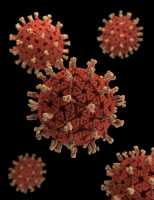Author Interviews, CDC, COVID -19 Coronavirus, JAMA / 08.01.2021
More Than Half of COVID-19 Infections Acquired from Asymptomatic Carriers
MedicalResearch.com Interview with:
Jay C. Butler, MD, FAAP, MACP, FIDSA
Deputy Director for Infectious Diseases
Centers for Disease Control and Prevention
Atlanta, GA 30333
MedicalResearch.com: What is the background for this study?
Response: There are still disagreements about the significance of transmission of SARS-CoV-2 from asymptomatic persons. It has been known since at least March 2020 that, unlike the closely related coronavirus that causes SARS, transmission of COVID-19 from asymptomatic and presymptomatic persons occurs and that at least 30% of infected persons do not develop symptoms. Estimating the proportion of transmissions from persons without symptoms informs the decision analysis for prioritization of community mitigations opportunities: wearing of masks, social distancing, and hand hygiene. If only a low proportion of transmission occurs from people without symptoms, these interventions would be less likely to control transmission when broadly applied in the community. On the other hand, if a significant proportion of spread is from infected persons without symptoms, the value of these measures is enhanced.
Additionally, obtaining strategic and systematic screening tests for SARS-CoV-2 to identify and isolate persons without symptoms in selected settings, such as congregational housing settings, will have greater potential impact if spread from persons without symptoms is common. (more…)
































